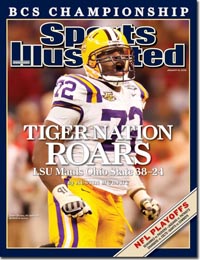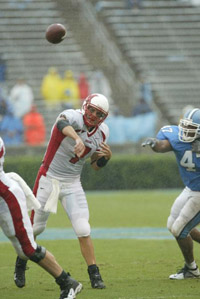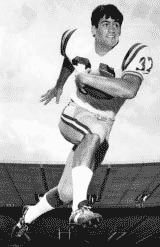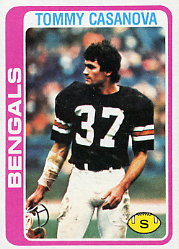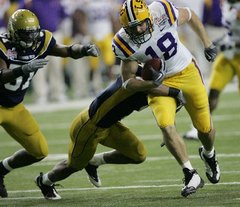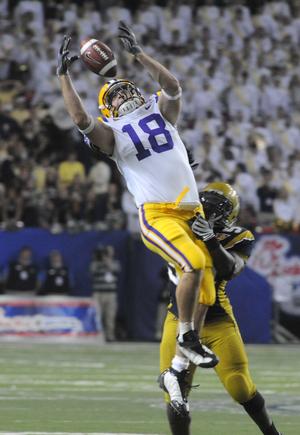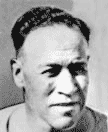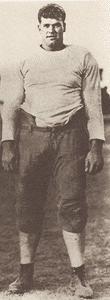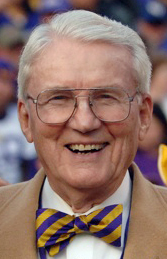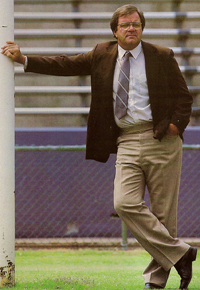|
|
Interesting Story: LSU Lost a Game and a Coach

Bobby Bowden
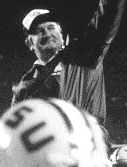
Charlie McClendon
|
Charlie McClendon's (forced) retirement was announced prior to the 1979 season. This allowed AD Paul Dietzel time to find "a new head football coach ... the best available from among the ranks of proven head collegiate football coaches."
It is now known that the man Dietzel had his eye on was Bobby Bowden who was in his fourth year at Florida State. As luck would have it, Bowden brought his unbeaten Seminoles to Tiger Stadium on October 27 for a regionally-televised afternoon game.
- Bowden: "At that time Florida State wasn't thought of. I had the support here [FSU], but it was kind of like Southern Mississippi – do you think they can do it? No. ... I was kind of in a quandary in Tallahassee, because I'm not sure we can do it. It wasn't just my thinking but anybody's thinking. It was like, 'Bobby, if you get the LSU job, take it.'"
- According to Bowden, Dietzel had inquired as early as September about his interest in the job. Bobby made it clear that he wouldn't make any decision until after the season. Dietzel promised to call back every two weeks or so. So they agreed on a code. Dietzel would say, "This is his brother Paul" when contacting Bobby. The week before the LSU-FSU game, Dietzel told Bowden "We want you."
- Bobby decided to base his decision on the outcome of the game in Tiger Stadium. "If we go in with this undefeated football team and we can't beat them, they might just be a better program. We'll never be able to beat them. If they beat us, I just might take the job. But if we beat them, hey, maybe we can be as good as them."
- Early in the week, Bobby called the upcoming contest the biggest football game in FSU history. Little did anyone know the full significance of the statement.
- Florida State won 24-19, a victory some called the biggest in school history. (Little did they know what had been going on behind the scenes.) Bowden usually alternated two QBs. But with Wally Woodham recuperating from dental surgery, Jimmy Jordan completed 14 of 31 for 312y and three TDs.
Bowden signed a new contract with FSU shortly thereafter with a raise to $46,000 base salary and a 10% increase each year.
- Bobby went on to unprecedented success at FSU, including 12 straight years ranked #4 or higher and two national championships.
- Dietzel hired Bo Rein, the head coach at North Carolina State. However, Bo was killed in a plane crash 42 days after taking the job.
|
The Night Big Ben Came to Tiger Stadium
Ben Roethlisberger has won two Super Bowls with the Pittsburgh Steelers, including one in his second NFL year (2005). Tiger fans may remember that Big Ben came with his Miami (OH) Red Hawks to Tiger Stadium on September 14, 2002.
This was Miami's third trip to Baton Rouge. The first had brought a stunning upset in 1986. After upsetting #7 Texas A&M in the opener, 35-17, the #8 Tigers had fallen to the Redskins (as they were known then) 21-12 "for the biggest upset in school history" according to the Miami 2002 Game Notes. Bill Arnsparger's third and final LSU team shook off the setback to win the SEC and go to the Sugar Bowl. LSU gained revenge in 1990 over the Mid-American Conference foe 35-7.
Nick Saban's third Tiger team, defending SEC champions, had begun 2002 inauspiciously with a 26-8 loss at Virginia Tech. A ho-hum 35-10 cakewalk over The Citadel had begun the home season and put LSU at #25 in the AP and #22 in the ESPN/USA Today polls. Miami had lost a tough one at home to Iowa 29-24 after winning at North Carolina 27-21.
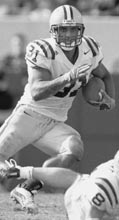 
Domanick Davis and LeBrandon Toefield Roethlisberger, a sophomore, had already attracted the eye of football insiders like Mel Kiper of ESPN. However, the Tiger D held him to 195y passing (34-22-1) in a 33-7 victory before 90,010.
- LSU led 13-0 after the first quarter on two John Corbello FGs and an 8y TD pass from Matt Mauck to Michael Clayton.
- The Tigers made it 16-0 before Roethlisberger hit Korey Kirkpatrick on a 7-yd scoring aerial. Ara Parseghian's grandson, Jared, kicked the PAT to make it 16-7. That would be the extent of the Red Hawk scoring.
- Mauch connected with Clayton for a second TD, this one from the 24, to make it 23-7 at the half.
- Second half scoring was confined to ten Tiger markers in Q3: another FG by Corbello and a 6yd pass from Mauck to TE Demetri Robinson with 0:10 left.
- Junior TB LeBrandon Toefield led all Tiger rushers with 111y on 17 carries.
The 26-point loss was the worst the Red Hawks had suffered and the seven points were fewest they had scored under six-year coach Terry Hoeppner.
|
|
|
|
At the Florida game in October 2009, LSU retired Tommy Casanova's #37 jersey. That made him only the second football player to be so honored by the school after Billy Cannon (#20), the only Heisman Trophy winner in Tiger history.
- Casanova starred at Notre Dame High School in Crowley LA. However, he says, "I was only recruited by three schools to play ball after I graduated. I picked Tulane, even though they weren't recruiting me because I was young, idealistic and had family in the New Orleans area."
- Nelson Stokley, then LSU's QB and a family friend from Crowley, kept Tommy from making a big mistake by telling him, "You are insane for thinking to go to Tulane. Why don't you come to LSU and play with us?"
- Tommy played freshman football in Baton Rouge in 1968 for Coach Mel Didier. "Coach Didier made Charlie Mac look like Mother Teresa," says Casanova.
- When Tommy joined the varsity, the staff had to decide where to play him since he had both O and D skills. He was used as a CB his sophomore season. It didn't take him long to make a splash. He made a tackle behind the line on a fourth-down play inside the Tiger five in a 21-20 nationally-televised victory over Auburn in Tiger Stadium.
- Casanova also ran track during his years at LSU. That may have contributed to his gliding running style that made him seem to be several inches off the ground.
- For his junior year, Tommy switched to RB. However, he separated his shoulder in the Texas A&M game. So McClendon returned him to CB. #37 again saved his best for a national audience in the last game of the regular season against Ole Miss. With the SEC title and an Orange Bowl bid on the line, he set a school record and tied the NCAA record with punt returns of 61 and 73 yards for TDs in the 61-17 rout.
- In its college football preseason issue, Sports Illustrated tabbed Casanova as the nation's top player for 1971. He didn't disappoint, ending his career with seven INTs, 44 punt returns for 517 yards, and 72 carries for 302 with five TDs.
- Tommy's big disappointment his senior year occurred in the Notre Dame game at South Bend. In Q4, with the game scoreless, he dropped an INT in the end zone. Two plays later, ND kicked the winning FG.
Tommy was drafted in the second round (#29 overall) by Cincinnati. He played six years in the NFL. The legendary Paul Brown, his coach with the Bengals, said of him:
Just plain special. We never had anyone else like him. On defense, he played the ball like a center fielder. On punt returns, he was excellent. A very good football player and always a gentleman.
During his time in the NFL, Tommy completed his degree as an eye docctor. He returned to Crowley, where he has practiced ophthalmology ever since.
Dr. Casanova was elected to the College Football Hall of Fame in 1995, becoming the first LSU player to receive that honor since 1971, when Doc Fenton ('08) was inducted.
Reference: "Field of Dreams," Elizabeth Stuart, LSU-Florida Game Program 2009
|
He was born in Ocean Spring MS. His father played for Mississippi State. His grandfather played for Ole Miss. But after making all-State as a two-way player at E, Richard Dickson wanted to be part of LSU's winning program. Yet he never received any flak from the family.
My dad couldn't say anything because his dad went to his rival school. My dad never mentioned once where he wanted me to go. He's happy with the decision, and he likes LSU.
Dickson saw plenty of action beginning in his freshman season.
- Filling the gap when Keith Zinger suffered a season-ending injury in 2006, Dickson started the last nine games of the season. He made second team All-SEC Freshman Team and was honorable mention on the freshman All-American team.
- Richard will forever be remembered in Tigerland for his two TD receptions in the 2007 BCS Championship Game against Ohio State. Those were his fifth and sixth TDs of his sophomore season, which saw him playing in all 14 games, starting three.
- As a junior, Dickson started all 13 games and made second team all-SEC. He had 31 receptions for 324y and five TDs.
- Entering his senior year, he was placed on the watch list for the John Mackey Award given to the outstanding TE in the nation.
The NFL is probably in Dickson's future as he is an accomplished blocker as well as a receiver.
- nfldraftscout.com ranks Richard as the #2 FULLBACK (out of 106) among seniors.
- Other draft sites list him as a TE prospect.
Another Dickson may soon be cavorting at Tiger Stadium. Younger brother Travis committed to LSU in August 2009. A four-star prospect like Richard, Travis Dickson plays TE, FB, and DE for Ocean Springs High.
Reference: "Burning Desire," Ryan Ginn, LSU-Auburn Game Program 2009 |
|
Memorable Game: December 17, 1932 – Oregon @ LSU
Here is the Times-Picayune article describing the first visit the Oregon Ducks ever made to Tiger Stadium.
Oregon Beats Frostbitten Bengals 12-0
LSU Struggles Valiantly But in Vain on Frozen Field
Wm. McG. Keefe
Oregon University's Webfoots found the frozen gridiron of Louisiana State University just to their liking this afternoon and while a few hundred shivering loyal fans looked on, the Giants from the far Northwest downed the Tigers 12 to 0. Outweighed considerably, L.S.U. put up a great battle and on several occasions threatened Oregon's goal line. But it was obvious the extreme cold (the mercury was at 24 degrees), stiffened the fingers, toes and legs of the Tigers and they couldn’t come close to being themselves.
Big Jack Torrence's punting efforts were almost ludicrous – so out of control were his hand and his feet. He tried his best, and so did the whole L.S.U. team. But even Coach "Biff" Jones and Trainer Major Wandle, themselves hailing from the Far North, felt the biting cold to such extent that their faces were pinched and their fingers numb.
Oregon scored one touchdown early in the first period and tallied another in the third period. On neither occasion could the "Ducks" convert, the well-frosted toes of such snow diggers as Mark Temple and Bill Morgan being unable to thaw out successfully on a place kick, though a couple of thousand miles south of where they are used to booting extra points.
Other information on the game:
- One wire service article put the crowd at "less than 2000." The UP reporter estimated "barely a thousand."
- "The field was slippery and punts frequently fell for little or no gain when kickers lost their footing."
- LSU had a scoring opportunity early in the game when it recovered a blocked quick kick on the Oregon 17. After three plays gained only five yards, Torrance "was smothered before he could kick" a FG.
- Led by 200-lb HB "Iron Mike" Mikulak, who scored both TDs, the visitors amassed 11 first downs to two for the home team.
The game, played almost a month after LSU's 14-0 victory over archrival Tulane, concluded a 6-3-1 season in Jones's first season at the helm. Torrance, from Oak Grove LA, was a giant for that day, 6'5" 260 lb. In addition to anchoring the forward wall, he put the shot and tossed the discus on LSU's 1933 NCAA track championship team.
Oregon has returned to Baton Rouge twice since 1932, both times with better results for the home team.
- December 15, 1934: LSU 14 Oregon 13
- October 22, 1977: LSU 56 Oregon 17
LSU also defeated Oregon in the opening game of the magical 2011 season 40-27 in Dallas.
|
|
Memorable Game: September 26, 1987: Buckeyes' First Louisiana Invasion
Ohio State and LSU met twice on the gridiron prior to the 2008 BCS Championship Game – a home-and-home series in 1987-88.
- The first game, in Tiger Stadium, was moved to the afternoon for CBS.
- The novel pairing of two schools with rich football traditions didn't disappoint the national audience.
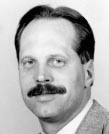
Mike Archer
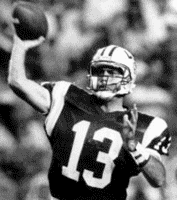
Tommy Hodson
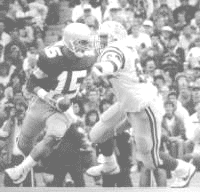
LSU-Ohio State 1988
|
Mike Archer was in his first year leading the Tigers, succeeding Bill Arnsparger, whom he had served as D coordinator.
- Bill's tenure had produced the most successful three years in school history, including two SEC championships.
- Earle Bruce was in his ninth season in Columbus after succeeding legendary Woody Hayes.
- The Buckeyes,
ranked #7, sported a 2-0 record while the #4 Tigers were
3-0.
Tiger sophomore QB Tommy Hodson started sharp, throwing a 24y TD to WR Rogie Magee on the opening possession. The teams then traded FGs to make it 10-3 at the break.
OSU tied the game with 11:07 left on Tom Tupa's 8y pass
to TE Jay Koch. The score was set up by an 11y pass
to FB George Cooper by QB-holder Scott Powell on a fake FG.
As
time wound down, LSU aggressively tried to break the
deadlock on their way to 348y of total offense.
- However, they failed to score in the second half as interceptions by CB Greg Rogans ended the last two possessions.
- Hodson (who ended 25-45 for 267ys) threw the first INT in the end zone while backup QB Mickey Guidry was guilty of the second at the Tiger 36.
- This put the visitors in position for a 47y FG try on the last play. DE Karl Dunbar got a piece of the kick to preserve the 13-13 tie.
The Tigers went on to a 10-1-1 season culminating in a Gator
Bowl win over South Carolina and a #5 ranking.
- The Buckeyes limped home 6-4-1, which finished Bruce's tenure.
- John
Cooper replaced him in time to face the Tigers in Columbus in 1988.
In a game that turned out to be the beginning of a steep decline that led to Archer's termination after the 1990 season, LSU blew a 13-point lead in the final two minutes as OSU rallied for a 36-33 victory.
|
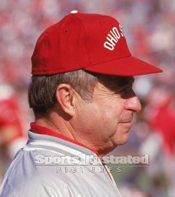 Earle Bruce
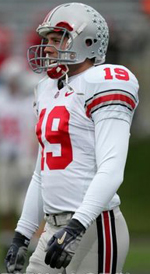
Tom Tupa
|
From Braces to All-America
When LSU's Glenn Dorsey was three years old,
doctors told his parents that his legs would not straighten on their own. So he wore braces for a year.
- He had to wear orthopedic shoes connected by chains as he watched his friends play.
- He fell numerous times as he worked to get his legs straight.
- Not until he was eight were his legs straight enough for him to play football.
- In little league in Gonzales LA, he was such a dominant FB that opposing parents tried to get him disqualified for being over the weight limit.
Reference: Gameday: The Official Program of LSU Football |
|
|
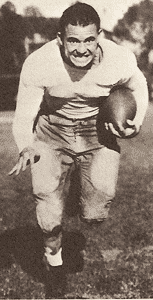
Jess Fatherree
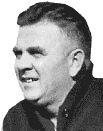
Bernie Moore

Harry Mehre
|
Memorable Game: Georgia 1935
Associated Press 11/16/1935: "Louisiana State University's football powerhouse, featurlng a 95y touchdown run by Lanky Jess Fatherree, trampled
Georgia, 13 to 0, today as the Bulldogs repelled three goal-line thrusts in a spectacular battle before about 20,000 fans. The convincing triumph of the Tigers from Baton Rouge virtually cllnched the Southeastern conference championship for the Bernie Moore-coached grldders."
The Tigers won their seventh straight after an opening 10-7 loss to Rice. Harry Mehre's Bulldogs fell to 6-2, their other loss coming at the hands of Alabama. LSU and Georgia had met only once before on the gridiron, a 13-12 Tiger victory in Athens in 1928.
- Fatherree's run came in the first quarter after LSU held the home team on downs at the six. HB Abe Mickal went into punt formation in the end zone. But, instead of kicking, he gave the ball to Jess in a variation of the Statue of Liberty play. Jess snaked 105y for the TD.
- Thanks to Georgia's red zone defense, the game remained close until Bill Crass ran 23y to paydirt in Q4.
- More indicative of the disparity between the teams than the score was LSU's 15-2 margin in first downs.
- Mehre proclaimed the Tigers "the best team that ever played on Sanford Field."
1,200 LSU ROTC Cadets made the trip to Athens 2 1/2 months after their benefactor, Senator Huey Long, had been assassinated. The Cadets played a role in postgame events that are still remembered in Georgia.
Reference: "A legendary LSU-Georgia 'battle'," Bill King, Atlanta Journal Constitution, 10/1/2009
|
|
"The Year of the Extra Point"
That is the title Pete Finney gave to the 1967 season in his book The Fighting Tigers II: LSU Football, 1893-1980. He should have expanded that monicker to "The Year of the Place Kick." Here's why.
- In the opener against Rice, a missed PAT almost cost LSU the game. Trailing 7-0 at the half, the Tigers scored two Q3 TDs to take the lead. However, sophomore PK Ray Hurd missed the PAT after the first tally. So when the Owls scored in the final period, they kicked the point to take a 14-13 lead. LSU then staged a 75-yd drive that climaxed with a 7-yd TD run by sophomore Glenn Smith with 0:29 remaining for a 20-14 victory.
- After victories over Texas A&M (17-6) and at Florida (37-6), LSU hosted the Miami Hurricanes. The Tigers showed little in the first half as the visitors went to the locker room with a 17-3 lead. But a a 33-yd TD pass from senior QB Nelson Stokley to RB Trigger Allen made it 17-9. However, the Tigers muffed the extra point. Later, Gerry Kent's INT set up a 23-yd romp to the end zone by RB Kenny Newfield to make the score 17-15. The Tigers went for two but didn't make it. In Q4, Stokley led a drive from his own 35 to the Miami 10, well within FG range. However, on second down Stokley started around RE, then tried to reverse field only to be dropped for a 14-yd loss. Then on third down, Nelson threw a pass which was intercepted in the end zone.
- After trouncing Kentucky 30-7, Charlie McClendon's squad made its first visit to Knoxville since the infamous 1959 game that ended LSU's 19-game winning streak. Tennessee led 7-0 at the half and quickly made it 14-0 in Q3. But Grezaffi returned the kickoff 100 yards to tie an SEC record. Then in the final period, LSU drove 80 yards, with Stokley taking it the final 14. Hurd's kick tied the game 14-14. The Vols came right back to retake the lead on a 33-yd FG by Karl Kremser with 1:05 left. In 29 seconds, LSU moved the ball to the Vol 20. On second and eight with no timeouts left, McClendon sent Hurd in for a 37-yd FG try. However, the kick was wide right.
- During the next week's preparation for the Ole Miss game in Jackson, Hurd was suspended for breaking curfew. So Steve Daniel became the kicker. Despite fumbling eight times, LSU scored with 3:22 remaining to tie the game at 13. However, Daniel, who had booted the first PAT, missed to the right and the Tigershad to settle for a tie.
- Alabama came to Baton Rouge the following Saturday. The Tide finally broke a scoreless tie with a 51-yd drive two minutes into Q4. With seven minutes left, FB Eddie Ray scored from the 4. But – you guessed it – Hurd's kick sailed wide right although it was holder Freddie Haynes who bobbled the snap to throw off the timing. McClendon said after the frustrating game that he didn't consider going for two with 7 minutes left. "I've never seen more losses in one season stemming from the place kick."
Fortunately, kicking was not an issue the rest of the way. After defeating Mississippi State 55-0 and Tulane 41-27, the Tigers upended unbeaten Wyoming in the Sugar Bowl 20-13 to finish 7-3-1.
|

Sammy Grezaffi
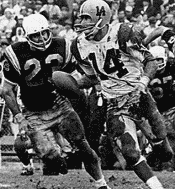
Nelson Stokley in the '68 Sugar Bowl
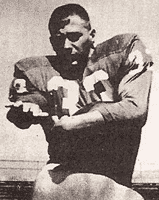
Kenny Newfield
Top of Page |
Interesting Story: Brodhead Takes Over – I
|
|
Paul Dietzel's tenure as LSU AD came to an end much sooner than expected.
- Hired in 1978, he was dismissed just four years later amid a sea of red ink in the Athletic Department, which had been subject to the first audit in its 50-year history.
- The audit revealed a $1.4 million deficit, which was projected to increase to well over $3 million in the next four years.
The LSU Board of Supervisors hired Bob Brodhead to replace Dietzel.
- Brodhead most recently had been Director of Finance for the Miami Dolphins.
- After a playing career at Duke (including a visit to Tiger Stadium as Blue Devil QB in 1958), in the NFL, CFL, and UFL, Bob became business manager and then vice-president of the Cleveland Browns.
- He was president and GM of the Portland Thunder of the World Football League. When that league folded, he took the job with the Dolphins.
- Brodhead thus became the first LSU AD in the 50-year history of the position who had no previous ties to LSU.
In his book Sacked! The Dark Side of Sports at Louisiana State University, Brodhead tells what he learned before and right after he took over as AD on June 1, 1982.
- Dietzel, having no business experience, delegated large amounts of authority to assistants, especially Assistant AD Larry Jones, a former Tiger player and coach, who also did not have the experience to perform his administrative functions.
- Brodhead: "The internal audit had not been ordered to uncover problems with the Athletic Department and make suggestions to help solve them; it had been ordered to find fault with Paul Dietzel."
- Armed with his business degree and years of experience in sports management, Brodhead gleaned from the audit the reasons why the department operated at a loss. Two major areas of concern were season ticket accountability and concessions. By changing the operating practices in those two areas and others, Brodhead captured large amounts of revenue that the school had been denied.
- As a former auditor for a major accounting firm, Brodhead concluded: "I investigated more types of business establishments than I knew existed, and I uncovered more bogus business practices than I cared to believe were possible. But I had never seen a more financially corrupt situation than the one I had walked into at LSU."
Brodhead's most startling statement about his tenure at LSU is this:
I am convinced that one of the primary reasons I was hired by LSU was to fire Head Football Coach Jerry Stovall.
Continued below ...
|
Interesting Story: Brodhead Takes Over – II
Jerry Stovall was one of the most popular athletes ever to play for LSU.
- A native of West Monroe, Jerry finished second in the Heisman Trophy balloting following his senior season in 1962.
- After playing nine years for the St. Louis Cardinals in the NFL, Jerry was hired as an assistant to Paul Dietzel at South Carolina. He soon returned to LSU as an assistant to Charlie McClendon.
- When Bo Rein died in a plane crash less than two months after replacing McClendon, LSU turned to Stovall as its head coach for the 1980 season.
- Stovall went 7-4 his first year but followed that with the worst record posted by an LSU team in a quarter century: 3-7-1. That season ended with a 48-7 humiliation in the Superdome.
- Led by one of the best recruiting classes in the school's recent history, including Dalton Hilliard and Garry James, LSU rebounded in 1982 to go 8-3-1. However, the season ended with four weeks of up and down play.
- On November 6, LSU dominated Alabama in Birmingham 20-10, holding Bear Bryant's last team without a first down in the first half.
- The next week, the Tigers lost to Mississippi State in Starkville 27-24.
- With an Orange Bowl invitation on the line, LSU clobbered Florida State 55-21 in Tiger Stadium.
- However, the regular season ended with an unexplainable 31-28 loss to 3-7 Tulane in Tiger Stadium.
Bob Brodhead took over as AD in early 1982.
- Not known for its collective patience, the [LSU] Administration had quickly grown tired of the roller coaster ride. But it was aware of Stovall's popularity and was reluctant to involve itself in the controversy that firing him was sure to cause. Whoever relieved Stovall of his coaching duties would undoubtedly incur the wrath of a large regiment of north Louisiana fans ... This was Brodhead's assessment of the situation he inherited.
- The solution, he soon realized, was this. ... the Administration had dought to hire an Athletic Director who, number one, was an experienced businessman capable of resotring order to the financially decimated Athleic Department; two, was capable of making tough decisions in a timely manner, and three, was a knowledgeable football person who could ultimately pull the plug on the popular Stovall. Enter Bob Brodhead.
Brodhead had developed his own reservations about Stovall's leadership.
- For some time, I had been experiencing doubts about Stovall's ability to make adjustments to his game plan once play was under way.
- One bright spot in Brodhead's assessment of his football program was young assistant Mack Brown. However, despite Bob's efforts to keep him – hoping that he would be Jerry's replacement without actually tellling Mack that – Brown took the head coaching job at Appalachian State, in part because he knew a Brodhead-Stovall blow-up was inevitable and he didn't want to get caught in the backlash.
The 1983 season confirmed Brodhead's fears.
- LSU won four and lost one in non-conference games, including a 40-14 blowout of Washingtonbefore a then-record crowd in Tiger Stadium.
- However, the Tigers went a stunning 0-6 in SEC play, the first winless conference season in school history.
- With three games left in the season, Brodhead began his search for a new coach. That quest produced Bill Arnsparger, who took the talent Stovall left behind and instilled the discipline and coaching to produce a 26-8-2 record over three seasons.
- As the '83 season ended, Brodhead realized that the LSU Administration was maneuvering to make him the ogre in the eyes of the press and public for firing Stovall (even though they privately agreed with the move). Before the Board of Supervisors meeting on December 2, at which time Brodhead would make the case for firing Jerry, the AD was "ridiculed, threatened, and pressured. My family and I needed a police escort from the November 25 LSU-UNO basketball game in New Orleans when a group of Tiger fans, who had taunted me and shouted obscenities during the game, was seen waiting by the exit afterwards."
- Bottom line: Influential LSU backers, angered that Brodhead had decreased their power and influence while putting the athletic department on a more solid financial footing, wanted the AD axed. The Administration made Brodhead the Fall guy in the Stovall firing to add another nail in Bob's coffin when they finally decided to fire him or force him to resign, which he did in October 1986.
Reference: Sacked! The Dark Side of Sports at Louisiana State University,
Bob Brodhead (1987)
|
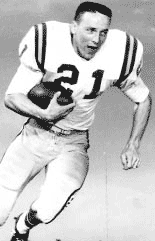
Jerry Stovall

Coach Jerry Stovall
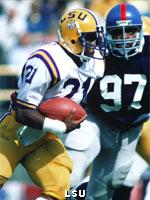
Dalton Hilliard
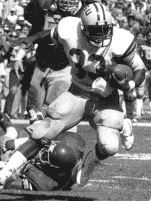
Garry James

Mack Brown, LSU assistant 1982
|
|




